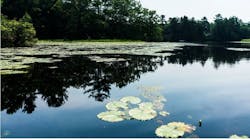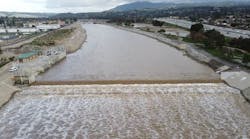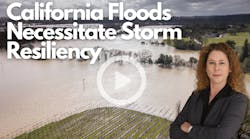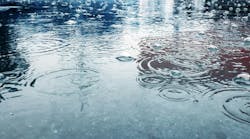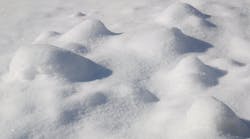Vaikko Allen is national regulatory director for Contech Engineered Solutions. Allen can be reached at [email protected].
Last July, after a sweltering stretch of triple-digit heat, I set out to explore a favorite tributary of the Rogue River in southern Oregon. Like most of Oregon, this area was officially in a severe drought condition and the heat wave seemed to be baking all remaining moisture out of the soil and the vegetation. As we neared our destination, dark clouds began to fill the sky. At first, I was glad to see rain on the horizon, anticipating cooling relief and rejuvenation of the landscape, but this was not a gentle summer shower. Soon the winds rose, sprinkles turned to a downpour, hail pelted the car, and great flashes of lightning and booming thunder filled the air. By the time the storm cleared, there had been more than 1,000 lightning strikes across Jackson and Josephine counties, and 68 fires had been confirmed. Unfortunately, this was not an isolated incident.
Storm Water Impacts
Fire is playing an increasingly prominent role in reshaping landscapes in the western U.S., as climate change results in rising temperatures, reduced rainfall and snowpack, and more extreme weather events. In 2017 and 2018, Oregon and California spent more than $2 billion fighting more than 28,000 separate fires that scorched 3.4 million acres. Given the tremendous human and economic losses associated with fire, it is right to focus attention on healing those affected communities. There also are storm water management implications to consider.
The most obvious impact of wildfires on storm water runoff is the reduction of vegetation and a resulting vulnerability of denuded landscapes to erosion. Without plants and a surface litter layer to intercept rainfall, the rain that falls has more power to mobilize soil, and slopes are destabilized. Other soil changes include increased hydrophobicity, organic matter destruction, atmospheric losses of elements, loss of microbial species and destruction of plant roots near the surface. All of these effects also increase runoff rates and erosion potential, and can limit the vegetative recovery rate. The hydrologic impacts range from turbidity increases in local streams to regional slope failure, such as the type experienced in Santa Barbara County, Calif., after the Thomas Fire in 2018.
Less obvious and less well studied are the receiving water impacts resulting from ash fall in areas outside the active burn zone. These may include increased loads of carbon, trace metals and organic compounds like polycyclic aromatic hydrocarbons. The introduction of fire retardant compounds into receiving waters also can be a result of firefighting activities.
Some regions consider fire impacts in their flood control planning requirements. For example, after observations of sediment production in the range of 120,000 cu yd per square mile of watershed in a large storm following a fire, the Los Angeles County sedimentation manual requires that flood protection facilities in susceptible areas be sized to handle the “burned and bulked” 50-year flow rate.
Planning Ahead
Ultimately, even if its frequency and severity have been boosted by human activity, fire is a force of nature and the natural world is resilient. Although fires are unpredictable, they can be planned for. This includes identifying areas at high risk for erosion and fire damage, responding with slope stabilization measures after a burn, and creating extra capacity in our culverts, bridges and other flood conveyance and storage structures for sediment that inevitably will come with post-fire flows. For storm water program managers, flexibility in meeting water quality standards for already-impaired waters also is critical.
The silver lining of the record-breaking fire activity of the past two years is that we have a new opportunity to investigate the magnitude and duration of fire effects on our receiving waters. We will need this knowledge to build the necessary resiliency and flexibility into our infrastructure and our regulatory frameworks as we prepare for a hotter drier future in the west.


